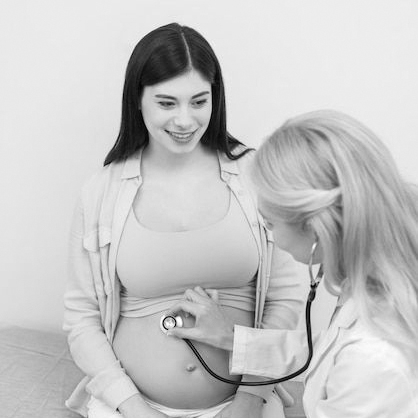High blood pressure during pregnancy is a common condition, affecting up to 10% of pregnant women. Normal blood pressure should be 120/80.
Chronic hypertension is diagnosed during pregnancy if an increase in pressure is recorded in at least two measurements before the 20th week of pregnancy: the maximum blood pressure is equal to or exceeds 140 mm Hg and/or the minimum pressure is equal to or exceeds 90 mm Hg . Chronic hypertension occurs in approximately 1–5% of all pregnancies.
Gestational hypertension: Increased blood pressure occurs after the 20th week of pregnancy and continues for 6 weeks after delivery. The condition occurs in approximately 5-10% of pregnancies, especially in multiple pregnancies. The risk of hypertension during pregnancy is higher in cases of obesity and the presence of chronic diseases, including diabetes.
Preeclampsia is diagnosed when high blood pressure is detected after the 20th week of pregnancy in women who have not previously had problems with blood pressure and is accompanied by the presence of protein in the urine (proteinuria) and/or dysfunction of other organs (kidneys, liver or brain).
Eclampsia: classic symptoms include seizures, characterized by destruction of red blood cells; increased levels of liver enzymes such as transaminases ; decreased platelet count.
What are the symptoms of hypertension during pregnancy?
In most cases, no specific symptoms are observed, so it is important to regularly check the hardware indicators. Preeclampsia involves damage to the liver and kidneys, which may include protein in the urine; abnormal swelling of the face, arms, and legs; headache; vision problems (blurred vision, spots); abdominal pain; and difficulty breathing. In rare cases, when preeclampsia becomes so severe that brain function is impaired and seizures or coma occur, it is called eclampsia. Even less commonly, when the liver and blood cells are affected, bleeding, for example from the nose or gums, bruises, severe fatigue and liver failure occur.
What are the risks?
High blood pressure during pregnancy carries a number of potential risks for both mother and baby. Reduced blood flow to the placenta can deprive the fetus of essential oxygen and nutrients, leading to intrauterine growth restriction; low birth weight; and premature birth with possible respiratory complications and an increased risk of infections in the newborn. High blood pressure, especially if associated with preeclampsia , increases the risk of premature separation of the placenta from the uterus. In severe cases, this condition can cause life-threatening bleeding for both mother and baby.
What to do?
Regular daily physical activity, as discussed with your gynecologist, such as walking or swimming, can help keep your blood pressure within normal limits. A balanced diet and reduced salt intake may also help lower blood pressure. There is insufficient evidence to support the use of dietary supplements to control blood pressure (magnesium or fish oil).
In the case of drug therapy chosen on the basis of its safety for the fetus, the target value to be achieved is usually 140/90 mmHg . In case of preeclampsia , the final method of choice is childbirth.
High blood pressure during pregnancy can usually be effectively controlled. Therefore, it is recommended to report any abnormal values or symptoms to the gynecologist at the Bogolyuby Medical Center , and in the case of very high values, call an ambulance.



















